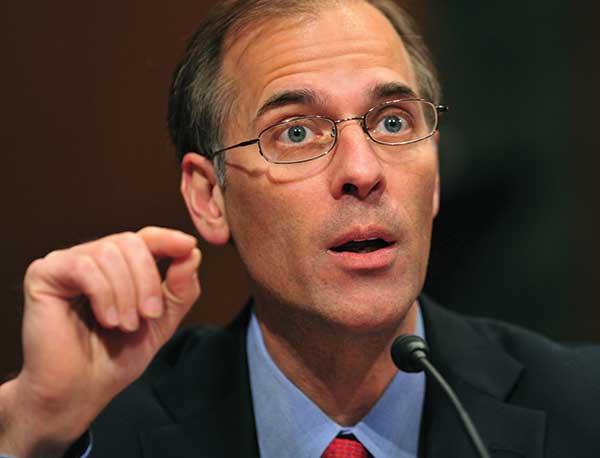Mark Zandi
Chief Economist and Cofounder of Moody’s Economy.com
Mark Zandi is chief economist of Moody’s Analytics, where he directs research and consulting. Moody’s Analytics, a subsidiary of Moody’s Corporation, is a leading provider of economic research, data and analytical tools.
Zandi’s research interests include macroeconomics, financial markets and public policy. His recent research has focused on the determinants of mortgage foreclosure and personal bankruptcy, analyzed the economic impact of various tax and government spending policies, and assessed the appropriate policy response to bubbles in asset markets. Mark also conducts regular briefings on the economy. He is often quoted in national and global publications and interviewed by major news media outlets and is the author of Financial Shock, an exposé of the financial crisis. His next book, Paying the Price, provides a roadmap for meeting the nation’s daunting fiscal challenges.
A trusted adviser to policymakers and an influential source of economic analysis for businesses, journalists and the public, Mark has frequently testified before Congress on topics including the economic outlook, the merits of fiscal stimulus, financial regulatory reform, and foreclosure mitigation.
Dr. Zandi received his PhD at the University of Pennsylvania, where he did his research with Gerard Adams and Nobel laureate Lawrence Klein, and received his B.S. from the Wharton School at the University of Pennsylvania.
The Great Recession: A Changed Landscape
Everything about the economic downturn that began in December 2007 has been out of the ordinary. The same will be true of the recovery. The excesses that led to the worst U.S. recession since the Great Depression mean that markets as well as the regulatory environment will emerge substantially altered. Consumer spending, saving habits, credit markets, the composition of the labor force, global trade dynamics–all have been deeply rattled by global financial and economic developments. How and when will the U.S. fully recover from this downturn? And what will the economic landscape look like when it does? Already, the downturn is no longer intensifying. Even though some 25 million workers–more than 15% of the workforce–are either unemployed or underemployed, a number of positive–or rather, less negative–reports on the economy are giving solace to stock and bond investors: Although almost one-half of home sales are now foreclosure or short sales, they have stabilized. Consumers remain cautious, but retail sales have firmed. And although manufacturers and retailers will need to cut even more jobs, the worst of the layoffs is behind us. An increase in long-term interest rates poses a new threat, but it is not too soon to consider the character of the subsequent economic recovery. History shows that severe downturns yield strong recoveries, but history may not be so reliable a guide this time.
Financial Shock: Could It Happen Again?
How could a once-obscure lending category unleash the worst financial crisis since the Great Depression? How did the effects of the U.S. subprime mortgage crisis spread around the globe? Faulty reasoning and greed created an environment that led up to the crisis, and laxity allowed it to spread. To avoid a recurrence, homeowners, investors and policymakers would do well to examine not only specific missteps, but also the deeper forces behind the crisis, including homeowner psychology, antiregulatory sentiment, and the technology that facilitates complex global lending. This speech is based on his highly regarded book that exposed the roots of the subprime crisis, Financial Shock: Global Panic and Government Bailouts–How We Got Here and What Must Be Done to Fix It.

